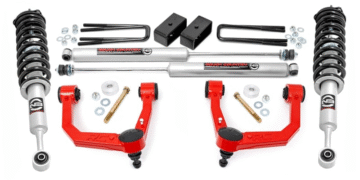Marketing has always thrived on the deep understanding of customer behaviors and preferences. With the advent of digital technology, the ability to untangle intricate consumer data patterns has become paramount for businesses striving to stay ahead, making them seek for the needed customer segmentation tool. Segmentation tools like Adestra have emerged as a cornerstone in the personalization of marketing efforts, promising to deliver more tailored and impactful messages to diverse audiences.
Understanding Customer Segmentation in Today’s Digital Landscape
In the expansive terrain of digital marketing, customer segmentation is the process of dividing a customer base into distinct groups that share similar characteristics. This technique enables marketers to more effectively target their communications, products, and services. Demographics, psychographics, geographic data, and behavioral patterns often inform these categories, giving marketers a clearer picture of their audience.
The rise of data analytics has significantly enhanced the power of customer segmentation. Marketers now have access to a vast array of data points collected from online interactions, purchase histories, and even social media activity. These insights inform more than just messaging they shape product development, sales strategies, and even customer service protocols.
Moreover, segmentation helps in identifying niche markets and under-served customer groups. With detailed segmentation, companies can discover new opportunities and tailor their marketing strategies to address untapped potential within their market. This becomes a strategic advantage in an increasingly competitive digital landscape.
As businesses accumulate data, the challenge lies in its interpretation. Effective segmentation hinges on the ability to distill large data sets into actionable insights. This is where advanced analytics and customer segmentation tools step in, offering marketers the means to cut through the noise and focus on what truly matters: the customer.
The Role of Customer Segmentation Tools in Personalized Marketing
The proliferation of digital channels has made personalized marketing not just desirable, but expected by consumers. A customer segmentation tool becomes indispensable in delivering on this expectation by enabling businesses to send the right message to the right person at the right time. Gone are the days of one-size-fits-all campaigns, as personalization emerges as the key to consumer hearts and minds.
Segmentation tools leverage algorithms to categorize customers based on multi-dimensional data, such as past purchasing behaviors, engagement levels, and even predictive modeling. Marketers can thus create personas that mirror real-world customers and craft narratives that resonate on a personal level. This approach engenders brand loyalty and can significantly lift conversion rates.
Personalized marketing also extends beyond email and advertising. Websites can dynamically change content, offers, and even navigation based on the visitor’s segment, creating a bespoke experience. As a result, consumers feel understood and valued, which increases their proclivity to engage with the brand.
To achieve this level of personalization, the choice of a customer segmentation tool is critical. It serves as the engine behind personalized marketing efforts, enabling businesses to automate segmentation and customize interactions across the entire customer journey.
Enhancing Targeting Efficiency With Advanced Segmentation Techniques
Advanced segmentation techniques, such as predictive analytics, have raised the bar for targeting efficiency. By identifying patterns and predicting future behaviors, companies can proactively address customer needs and desires. This forward-looking approach optimizes marketing efforts, focusing resources where they are most likely to yield positive results.
Data enrichment plays a significant role as well. By supplementing owned data with third-party sources, businesses can fine-tune customer profiles and segmentation. This comprehensive view empowers marketers to anticipate needs and present solutions before the customer even recognizes them, thereby increasing relevance and engagement.
However, sophisticated segmentation is not without its challenges. As customers expect more privacy and control over their data, marketers must navigate the tightrope between personalization and privacy concerns. Tools that enable segmentation while respecting consumer data rights are essential for maintaining trust and complying with regulations like GDPR and CCPA.
Ultimately, enhanced targeting efficiency leads to a reduction in wasted marketing spend. By aligning marketing messages with the interests and needs of specific segments, marketers can achieve better results with less effort. This targeted approach not only boosts ROI but also strengthens the customer relationship through relevance and respect.
Overall, customer segmentation tools have proven to be a linchpin in the creation of effective and personalized marketing strategies. They offer the insights and automation necessary to comprehend and cater to the complexities of consumer behavior. When implemented thoughtfully, these tools can unlock new levels of efficiency, engagement, and growth for businesses willing to embrace a data-centric marketing approach.













